Reviews
Formal logic
Issue 4/1995 | Archives online, Authors, Interviews, Reviews
Maarit Verronen’s novel, Pimeästä maasta (‘Out of the Land of Darkness’), inhabits the borderland between science fiction and fantasy. It is also a classic story of the demands of integrity in a harsh and prescriptive world. It is set daringly on the far side of time and place: the name of its main character is Ulthyraja Tharabereghist, from which one can already deduce that the novel does not deal with the real world. Pimeästä maasta is a cleverly constructed novel which surprises its reader in many different ways. The first surprise is that Verronen does not define her main character’s gender. The structure of the Finnish language, in which the personal pronoun does not reveal the gender of the person to whom it refers, makes this possible. More…
On a magic carpet
Issue 3/1990 | Archives online, Authors, Reviews
‘Tulavall is not large, but it is old and on the coast, just where the River Tatel runs into the sea.’ That is how the Finland-Swedish writer, Irmelin Sandman Lilius, starts her first book on the town of Tulavall, a place which has become her own universe in which she combines saga and realism with fantasy and history.
Tulavall and its inhabitants have become known and loved in ten languages. Last year, for instance the fourth edition of Bonadea, the book quoted above, was brought out in Spanish. The founder of Tulavall, King Tulle, can be read about in English, German, Danish, Finnish and, of course, Swedish. The three books about the magical Mistress Sola are to be published in Japanese.
Irmelin Sandman Lilius herself lives, just as do the girl Bonadea, King Tulle and Mistress Sola, in a small coastal town called Hangö [Hanko], where Irmelin and her husband Carl-Gustaf paint pictures and write books in a heavenly stone house by the sea. More…
Island epic
Issue 1/1990 | Archives online, Authors, Reviews
Ulla-Lena Lundberg‘s novel Leo was one of last autumn’s best-sellers: written in Swedish, it was published simultaneously in Finnish, and praised unanimously by critics in both languages. The first volume of a trilogy, Leo tells of the lives of Åland shipowners and their families at a time when men sailed the seas and women’s lot was to wait at home. Lundberg’s story is at the same time old-fashioned, with its finely drawn portraits, and a modernist structured novel that rises above everyday realism.
‘In Åland literature is peripheral;’ says Ulla-Lena Lundberg in the Helsinki bookshop where she is signing copies of Leo. Nevertheless, the Åland (in Finnish, Ahvenanmaa) islands, between Finland and Sweden, have bred some important writers. I am thinking, for example, of Sally Salminen, whose Katrina (1936) is one of the most translated Finnish novels. And at present there is the influential writer Johannes Salminen, an essayist and pointed polemicist in many areas (he also happens to be Ulla-Lena Lundberg’s publisher). More…
Real lives
Issue 1/1990 | Archives online, Authors, Reviews
Finnish literature rests largely on a realist tradition. Literature has been valued most when it gives a faithful description of the world. Realistic descriptions of people and nature gradually gave way to social realism, which in turn developed into psychological realism, currently the major trend; sometimes a tiring one. Contemporary Finnish literature overflows with portraits of relationships, family hells and Bildungsromanen, most of them scarcely indistinguishable from one another.
Psychological realism is at its most interesting when it has a social dimension. When – according to the realist tradition – it also deals with its own time, human conditions and ideals, or their absence. The work of Annika Idström (born 1947) has always included this dimension. It may be the main reason for the passion her books provoke, and for their undisputed importance contemporary Finnish literature. More…
Soulscapes
Issue 2/1987 | Archives online, Authors, Reviews
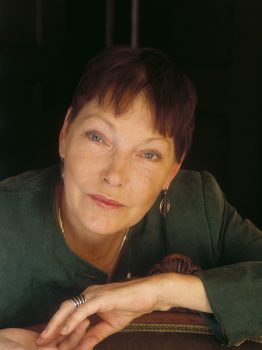
Raija Siekkinen. Photo: Irmeli Jung
When the first collection of short stories by Raija Siekkinen (born 1953), entitled Talven tulo (‘The coming of winter’, 1978) appeared, the critics were unanimous on one point: here was a mature writer with an original, individual voice. For her second collection, Tuomitut (‘The condemned’, 1982), Raija Siekkinen received the coveted Kalevi Jäntti Prize. Since then she has remained faithful to the short story. And since the publication of her fourth collection, Pieni valhe (‘A small lie’), the reader has been able to trace a development in which she has polished and tightened her narrative and brought to it more and more poetic and symbolic elements.
The main character in Raija Siekkinen’s short stories is generally a woman, not old but not very young either, often alone, sometimes broken by illness. Death is a recurring theme with Siekkinen; illness withers her women, her men die sometimes by their own hand. Siekkinen writes seldom about children; when she does so, it is from a child’s point of view. This perspective results in a critique of the narrow and restricted world view of adults. But always sensitively, never pointing the finger. More…
A sense of order
Issue 2/1987 | Archives online, Authors, Reviews
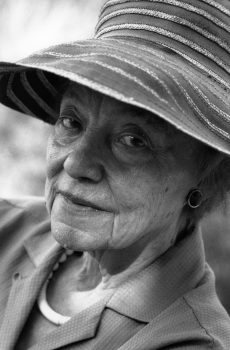
Solveig von Schoultz. Photo: Charlotta Boucht
That Solveig von Schoultz occupies the position of ‘grand old lady’ of Finland-Swedish poetry is beyond question; yet it is an epithet that fits her badly. It all too easily suggests the image of a stern and queenly poetess, an Edith Sitwell, Marianne Moore or Gabriela Mistral. The poetesses of Scandinavia are, by and large, less solemn – more gentle and down-to-earth, even when they grow older and wiser and ascend some of Parnassus’s more elevated thrones.
Solveig von Schoultz has, of course, had a long journey to the top. She has behind her twelve collections of poetry, at least fifteen volumes of prose, and an even greater number of plays for radio, television and theatre, spanning a good fifty years’ acitivity as a writer.
In this long artistic career there is both continuity and development. It might be said that the continuity is represented by the fact that from the very beginning she has preferred to describe women – their daily lives, their loves, thoughts, impulses, relationships. But since so much in the world of women and in women’s thinking has changed during the decades since her literary debut in the 1930s, both her themes and her outlook have necessarily altered, too. Among other things, she has had many of her early, then only half-developed ideas taken up by a later generation, and has thereby had them given back to her renewed. As a feminist she has always been one of the least militant, and for a short time some of her younger co-sisters were uncertain about the strength of her commitment to the Cause. More…
Too much or too little love
Issue 1/1987 | Archives online, Authors, Reviews
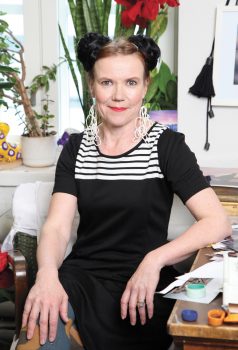
Rosa Liksom. Photo: Pekka Mustonen.
On the October day last year on which Rosa Liksom‘s second collection of short stories, Unohdettu vartti (‘The forgotten quarter’), was published, she also opened an art exhibition of her own work. The occasion took the form of a kind of cross between performance art and a practical joke. Young women dressed in Finnish military uniforms carried out body searches on every newcomer, changed the guard and drilled, while crackers exploded in the gallery. Many people were of the opinion that it was all no more than a silly joke. Even the art critics were not enthusiastic: they felt that Rosa Liksom’s felt pen work was derivative of a certain Danish artist who himself had copied the cartoon-like stick-men of the so-called Chicago school. But all the same, there emerged from the pictures a funny story about the artist’s adventures among the underground youth of Russia from Leningrad to Vladivostock.
Only her closest friends knew which of the soldiers in the gallery was Rosa Liksom, which her clones. Rosa Liksom is a pseudonym, and her little game of hide and seek has already lasted a couple of years. We know of her that she was born in Lapland, studied anthropology, has travelled in both East and West and lived for a long time in Copenhagen. Her writing was published for the first time in an anthology of the work of young authors, Kalenteri 84 (‘Calendar 84’, 1984). Her first work, the short story collection Yhden yön pysäkki (‘One-night stand’) was published in 1985 and achieved considerable success. More…
A poet’s perspective
Issue 4/1986 | Archives online, Authors, Reviews
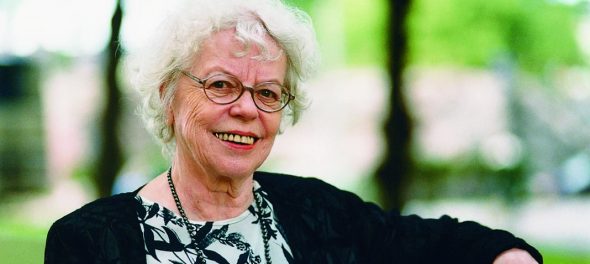
Aila Meriluoto. Photo: Pertti Nisonen
When Aila Meriluoto burst on to the world of Finnish poetry 40 years ago in the autumn of 1946 she was at once hailed as a youthful prodigy. Praised lavishly by the leading critics, the 22-year-old poet’s first collection, Lasimaalaus, sold in phenomenal numbers: in a couple of years it went through eight editions, or 25,000 copies, which in Finland is still a record figure. Today total sales are well over 30,000.
Two poems attracted particular attention. One was Kivinen Jumala (‘God of stone’), a poem of defiance unleashed by the experience of wartime bombing, in which God is portrayed as having changed into a stone statue, and people as having hardened correspondingly. It was the first reaction of the younger generation to the war – abusive, strong and inevitable, the proclamation of the death of the kind, just God.
The other central poem of the collection was Lasimaalaus (‘Stained glass’) from which the collection took its name: a taut post-symbolist vision and a dazzling synthesis of the oneness of the world. Baudelaire, master of correspondances, might well have been satisfied with it. More…
Concrete dreams
Issue 3/1986 | Archives online, Authors, Reviews
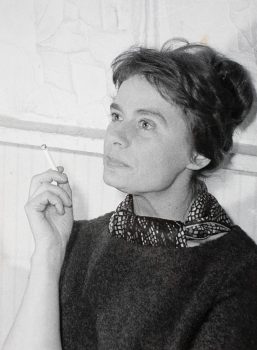
Marja-Liisa Vartio. Photo: SKS archives
Pirkko Alhoniemi on Marja-Liisa Vartio’s works
Although it is now 20 years since the death of Marja-Liisa Vartio (1924-1966), her writing remains as vivid as ever. Her books are regarded as classics of modern Finnish prose, and they constantly attract new readers, as the demands for reprints testify. Vartio’s style has not lost its freshness, nor her social vision its edge, even in the teeth of the aggressive feminism of the 1980s.
It is a little difficult to gauge the secret of her continued popularity. Although the main character of her novels is always a woman, Vartio cannot really be seen as a champion of the feminine point of view. Most essential and at the same time paradoxical in her work is perhaps the fact that, from a purely Finnish starting point, she is able to give valuable insights into the general change in world view that followed the Second World War. More…
Jouko Turkka’s factory of ideas
Issue 3/1986 | Archives online, Authors, Reviews
Jouko Turkka (born 1942) is a man of theatre by profession, not a writer. But according to him, all theatre people want to write: dramatic art is very transient, somehow one would like to immortalise one’s thoughts. ‘I want to destroy this virus’, he says in his book Aiheita (‘Themes’, 1983). ‘I don’t want future generations to waste their lives on this. – I have set down these “themes” of mine, in as simple a form as possible, just to show that I too have had a go at it. – Now I have got them off my chest, I need never write anything again.’
The following year Turkka published a novel, Kantelu oikeuskanslerille (‘A case for the Chancellor of Justice’), this year his play Hypnoosi (‘Hypnosis’) was performed at the Helsinki City Theatre; and this year, too, his play Lihaa ja rakkautta (‘Meat and love’) was performed in Gothenburg, Sweden. Turkka – theatre director, producer, former rector of the Theatre Academy (1983-85), where he is currently professor of theatre directing – evidently could not shake off the writing bug as easily as he had thought. More…
-
Currently browsing
Reviews of new Finnish fiction and non-fiction
-
RSS feed
Subscribe to RSS feed for Reviews
-
Archive
- June 2015
- May 2015
- April 2015
- March 2015
- February 2015
- January 2015
- December 2014
- November 2014
- October 2014
- September 2014
- August 2014
- June 2014
- May 2014
- April 2014
- March 2014
- February 2014
- January 2014
- December 2013
- November 2013
- October 2013
- September 2013
- August 2013
- July 2013
- June 2013
- May 2013
- April 2013
- March 2013
- February 2013
- January 2013
- December 2012
- November 2012
- October 2012
- September 2012
- August 2012
- June 2012
- May 2012
- April 2012
- March 2012
- February 2012
- January 2012
- December 2011
- November 2011
- October 2011
- September 2011
- August 2011
- July 2011
- June 2011
- May 2011
- April 2011
- March 2011
- February 2011
- January 2011
- December 2010
- November 2010
- October 2010
- September 2010
- August 2010
- July 2010
- June 2010
- May 2010
- April 2010
- March 2010
- February 2010
- January 2010
- December 2009
- November 2009
- October 2009
- September 2009
- August 2009
- July 2009
- June 2009
- May 2009
- April 2009
- March 2009
- February 2009
- December 2008
- November 2008
- September 2008
- June 2008
- March 2008
- December 2007
- September 2007
- June 2007
- March 2007
- December 2006
- September 2006
- June 2006
- March 2006
- December 2005
- September 2005
- June 2005
- March 2005
- December 2004
- September 2004
- June 2004
- March 2004
- December 2003
- September 2003
- June 2003
- March 2003
- December 2002
- September 2002
- June 2002
- March 2002
- December 2001
- September 2001
- June 2001
- March 2001
- December 2000
- September 2000
- June 2000
- March 2000
- December 1999
- September 1999
- June 1999
- March 1999
- December 1998
- September 1998
- June 1998
- March 1998
- December 1997
- September 1997
- June 1997
- March 1997
- December 1996
- September 1996
- June 1996
- March 1996
- December 1995
- September 1995
- June 1995
- March 1995
- December 1994
- September 1994
- June 1994
- March 1994
- December 1993
- September 1993
- June 1993
- March 1993
- December 1992
- September 1992
- June 1992
- March 1992
- December 1991
- September 1991
- June 1991
- March 1991
- December 1990
- September 1990
- June 1990
- March 1990
- December 1989
- September 1989
- June 1989
- March 1989
- December 1988
- September 1988
- June 1988
- December 1987
- September 1987
- June 1987
- March 1987
- December 1986
- September 1986
- June 1986
- March 1986
- December 1985
- September 1985
- June 1985
- December 1984
- September 1984
- June 1984
- March 1984
- December 1983
- June 1983
- March 1983
- December 1982
- September 1982
- June 1982
- March 1982
- September 1981
- June 1981
- March 1981
- December 1980
- June 1980
- March 1980
- September 1979
- June 1979
- March 1979
- December 1978
- September 1978
- June 1978
- March 1978
- December 1977
- September 1977
- March 1977
- September 1976
- March 1976
© Writers and translators. Anyone wishing to make use of material published on this website should apply to the Editors.
